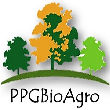Banca de DEFESA: VALDECIR DA COSTA LAGE
Uma banca de DEFESA de MESTRADO foi cadastrada pelo programa.DISCENTE : VALDECIR DA COSTA LAGE
DATA : 20/06/2025
HORA: 08:00
LOCAL: Sala de vídeo conferência - Unidade 01 - UNEMAT - Alta Floresta
TÍTULO:
NITROGEN AND SULFUR INTERACTION IN AMAZONIAN PASTURE
PALAVRAS-CHAVES:
Sulfur Nitrogen interaction, biological markers, pastures.
PÁGINAS: 60
GRANDE ÁREA: Ciências Agrárias
ÁREA: Agronomia
SUBÁREA: Ciência do Solo
ESPECIALIDADE: Fertilidade do Solo e Adubação
RESUMO:
The interaction between nitrogen and sulfur is a determining factor for the growth and development of plants. Understanding this relationship enables more efficient fertilizer management, improves production quality, and reduces environmental impacts. The interaction between nitrogen and sulfur in forage nutrition is of great importance, due to the direct relationship of these nutrients with biomass and crude protein production. This study aimed to evaluate the interactions between nitrogen and sulfur in Elephant Grass BRS Kurumi. Twelve treatments were evaluated, in a 4x3 factorial scheme, with three replications, totaling 36 plots. Nitrogen was applied at doses of 0, 50, 100, and 150 kg ha-1, while sulfur was applied at doses of 0, 30, and 60 kg ha-1. The experiment was conducted in an experimental field of the State University of Mato Grosso (UNEMAT), located in Alta Floresta/MT, from November 2024 to February 2025. Two cuts were performed, evaluating dry biomass productivity, chlorophyll A, chlorophyll B, chlorophyll A/B ratio, pheophytin A, and pheophytin B. For the chlorophyll A variable, there was no statistically significant difference between treatments (p = 0.1379; p > 0.05). For chlorophyll B, there was a significant difference between treatments (p = 0.0275; p < 0.05), indicating that at least one of the treatments showed a difference in relation to the others. For the A/B ratio, no significant difference was observed between treatments (p = 0.7096; p > 0.05). For the pheophytin A variable: p = 0.0895 (not significant, but close to 0.05). For the pheophytin B variable: p = 0.1079 (not significant). For the A/B ratio: p = 0.5348 (not significant). None of the analyzed variables showed statistically significant differences between the groups at the 5% significance level. The results indicate the need for a more in-depth study on this relationship, with different doses and a longer development period. The interaction between nitrogen and sulfur is essential for productivity, the nutritional value of forages, and pest control. Thus, optimizing this interaction is fundamental to make livestock activity viable, which plays an essential role in meeting the growing global demand for animal protein
MEMBROS DA BANCA:
Presidente - 006.844.991-77 - GUILHERME FERREIRA FERBONINK - NÃO INFORMADO
Interno - 210865003 - GUSTAVO CAIONE
Interno - 117000004 - MARCO ANTONIO CAMILLO DE CARVALHO
Externo à Instituição - FLÁVIO CARLOS DALCHIAVON - IFMT



